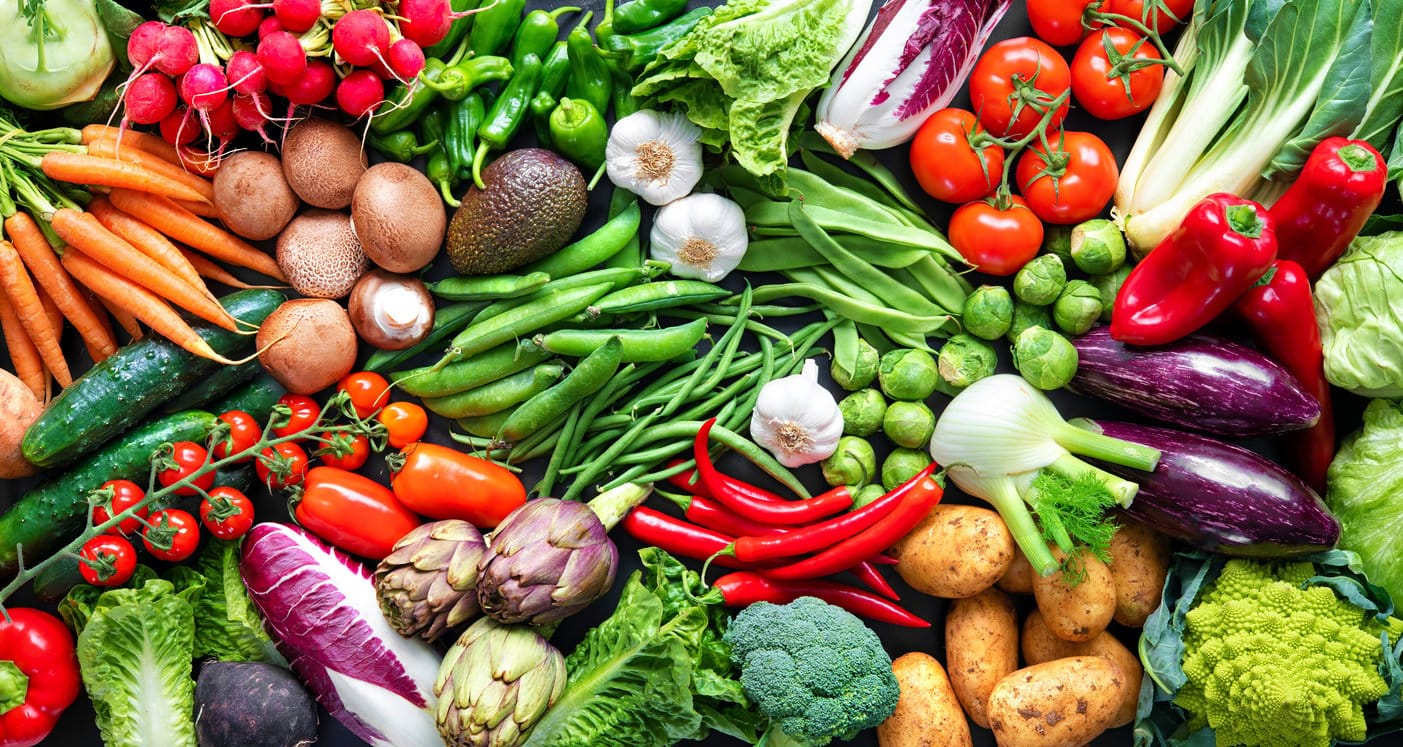commerical
How to Start Your Own Organic Vegetable Garden at Home: A Step-by-Step Guide

Starting your own organic vegetable garden at home is an incredibly rewarding experience. Not only does it provide you with fresh, healthy food, but it also allows you to reconnect with nature and play a part in reducing your carbon footprint. Whether you have a large backyard, a small balcony, or just a windowsill, creating an organic vegetable garden is possible with the right approach. Here’s a unique, practical guide to help you get started on your gardening journey.
1. Create a Vision for Your Garden
Before diving into the practicalities, take a moment to imagine the garden you want to cultivate. Do you want a colourful array of herbs and vegetables or a more structured garden with rows of leafy greens? Visualizing the type of garden that fits your space, lifestyle, and culinary preferences is the first step in making your organic garden a reality.
Think about:
- What you love to eat: If you’re passionate about salad, grow leafy greens like lettuce, spinach, and arugula. If you love home-cooked meals, think about growing vegetables like tomatoes, zucchini, and herbs like basil.
- Space constraints: Will you be using raised beds, containers, or traditional garden rows? This will help guide your planting choices and design.
- Time commitment: Some vegetables require more care and attention, while others are more low-maintenance. Choose varieties that match the time you’re willing to dedicate.
2. Pick the Right Spot for Your Garden
Every plant has different needs, but all vegetables require sunlight to thrive. Make sure you select a spot that gets at least 6-8 hours of direct sunlight per day. A sunny corner in your backyard, rooftop, or balcony can become your vegetable haven.
If you’re limited in space, consider creative solutions like vertical gardening (using trellises for tomatoes, cucumbers, etc.), or hanging baskets for herbs. Raised beds or large containers can help you take advantage of any available space.
3. Assess and Improve Your Soil
Soil health is the cornerstone of any organic garden. Healthy soil leads to healthier plants and better yields. Start by assessing the quality of your soil. Is it clay-heavy, sandy, or loamy? Take a soil sample to a local gardening store or extension service to test its pH and nutrient levels.
To enhance the fertility of your soil organically:
- Add compost: Compost is your best friend in organic gardening. It enriches the soil, retains moisture, and introduces beneficial microorganisms. Start a compost pile or use store-bought organic compost.
- Use organic fertilizers: If your soil test indicates any deficiencies, consider using organic fertilizers like fish meal, bone meal, or seaweed extract.
- Consider natural amendments: You can improve your soil’s structure by adding organic materials like shredded leaves, straw, or grass clippings.
4. Choose the Right Organic Seeds
Selecting organic, non-GMO seeds is vital to maintaining the integrity of your garden. Many garden stores offer a wide range of organic seeds. You can also find specialized online suppliers.
When choosing seeds, consider:
- Climate compatibility: Choose vegetables suited to your local climate and growing season. Look for heat-tolerant varieties if you live in warmer climates or frost-resistant ones if you live in cooler areas.
- Grow what you eat: Stick to vegetables that you love to eat and those that are easy to grow in your conditions. Leafy greens, radishes, and peas are great for beginners.
- Heirloom varieties: These non-hybrid seeds often have a better flavour and nutritional value, and they’re great for saving seeds year after year.
5. Master the Art of Planting
Once you have your seeds and soil ready, it’s time to plant. Whether you’re sowing seeds directly into the ground or starting with seedlings, make sure you follow the specific planting instructions for each variety.
- Spacing is key: Plants need space to grow, so respect the recommended distances between seeds or plants.
- Depth matters: Plant your seeds at the recommended depth. Too deep and they won’t germinate; too shallow and they won’t be able to establish strong roots.
- Water gently: Newly planted seeds or seedlings need gentle watering to avoid dislodging them from the soil. Use a watering can or a gentle spray nozzle.
6. Implement Smart Watering Practices
Watering is one of the most important aspects of organic gardening. While overwatering is a common mistake, dry soil can stress your plants and limit their growth.
- Water deeply: Instead of frequent shallow watering, it’s better to water deeply to encourage root growth. This will help your plants become more drought-tolerant.
- Morning is best: Water your plants early in the morning, as the water will be absorbed before the heat of the day, reducing evaporation. This also helps avoid fungal diseases caused by wet leaves at night.
- Mulch to retain moisture: A layer of mulch around your plants will keep the soil cool and help retain moisture, reducing the need for frequent watering.
7. Natural Pest Control Solutions
In an organic garden, chemical pesticides are off-limits. Instead, you can rely on a variety of natural methods to protect your crops from pests:
- Encourage beneficial insects: Ladybugs, bees, and predatory wasps are all beneficial for your garden. These insects help control aphids, caterpillars, and other pests.
- Use companion planting: Some plants can help repel pests naturally. For example, planting marigolds near tomatoes can help keep aphids at bay, while basil can deter mosquitoes around peppers.
- DIY sprays: You can create homemade pest sprays using ingredients like garlic, soap, or neem oil, which are gentle on plants but effective against pests.
8. Pruning and Maintenance
Keep your garden neat and productive by regularly checking for signs of disease, overgrowth, or pests. Pruning your plants encourages healthy growth and improves air circulation.
- Prune for airflow: Trim any dead or overcrowded foliage to ensure your plants have enough space to grow and good airflow to prevent diseases.
- Remove dead or diseased plants: Always remove any plants showing signs of disease or pests to prevent the issue from spreading to healthy plants.
9. Harvesting at the Right Time
Harvesting vegetables at the right time is crucial for maximum flavour and nutrition. Don’t wait too long to pick your crops, as overripe vegetables can lose flavour and nutrients.
- Leafy greens: Harvest outer leaves regularly to encourage new growth.
- Root vegetables: Carrots, potatoes, and beets are ready when their tops peek through the soil or when they reach a mature size.
- Fruit-bearing plants: Tomatoes, cucumbers, and peppers should be picked when they reach full colour and firmness.
10. Reap the Rewards and Keep Learning
Once you start harvesting, you’ll be able to enjoy the fruits of your labour—fresh, homegrown, organic vegetables! However, gardening is a continuous learning process. Observe how your plants grow, experiment with new varieties, and always seek out ways to improve your gardening techniques.
Don’t forget to save seeds from your healthiest plants for next season, and keep improving your soil with compost and organic matter.
Final Thoughts
Creating an organic vegetable garden at home is not only about growing food—it’s about building a deeper connection with the earth and your food sources. Whether you have a few square feet or a large plot of land, growing your own organic vegetables is both achievable and rewarding. By following these steps, you can cultivate a garden that nourishes your body, supports the environment, and enhances your overall well-being. Enjoy the process, and happy gardening! 🌱🍅
Categories
-
 Dairy products
5
Dairy products
5
-
 Dry Goods and Essentials
195
Dry Goods and Essentials
195
-
 Fruits and Vegetables
70
Fruits and Vegetables
70
-
 Personal Care
38
Personal Care
38
-
 Healthy Drinks
19
Healthy Drinks
19
-
 Pooja essential
0
Pooja essential
0
-
 Traditional Utensils
0
Traditional Utensils
0
-
 Books
0
Books
0
Trending Now

Pineapple-1kg
₹62.00

Rasthali Banana-250g
₹27.00

Rose Oil
₹210.00

Pepper Mint Oil
₹175.00







